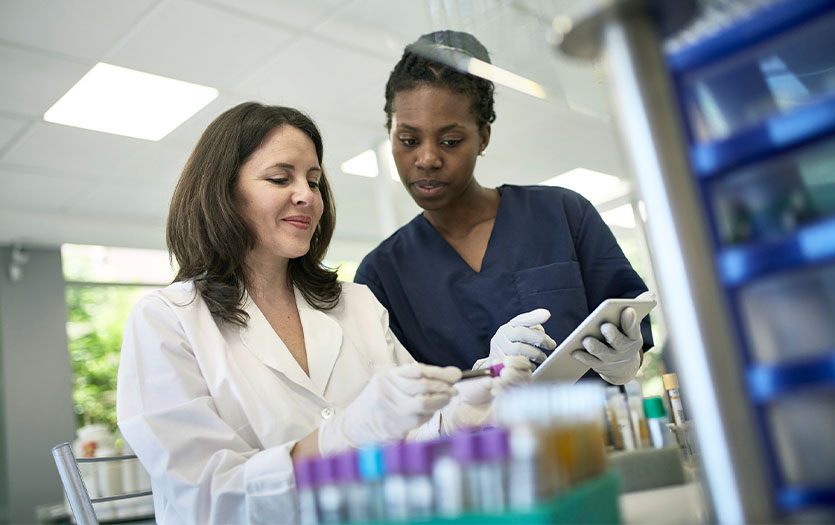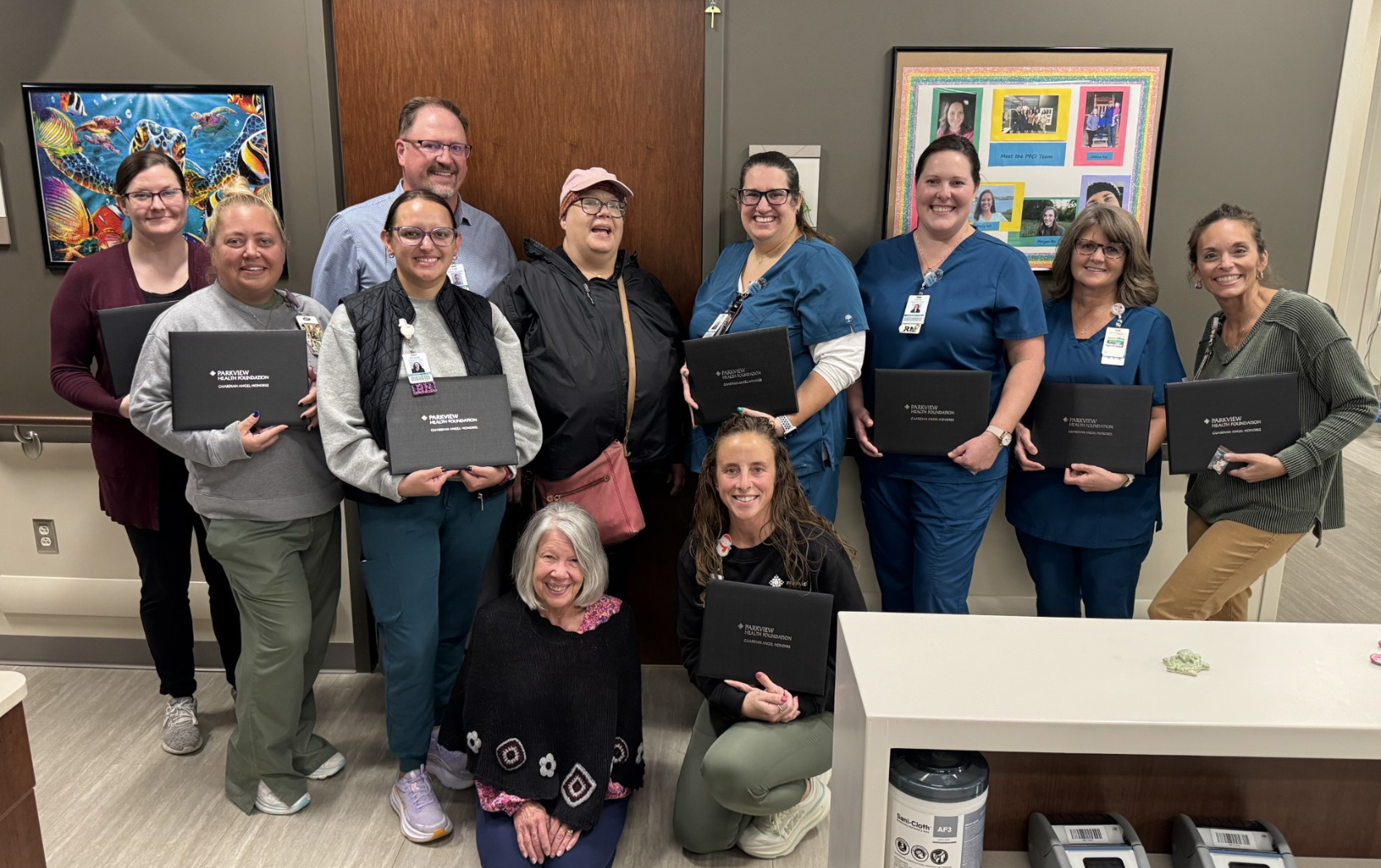 For Parkinson’s patients experiencing movement and speech impairments, there’s an evidence-based program delivering promising results and helping to delay the progression of symptoms. Amber Hetrick, MD, PPG – Neurology, and Tony Stump, PT, CLT, OCS-Emeritus, supervisor, Outpatient Therapy, explain LSVT® BIG and LOUD.
For Parkinson’s patients experiencing movement and speech impairments, there’s an evidence-based program delivering promising results and helping to delay the progression of symptoms. Amber Hetrick, MD, PPG – Neurology, and Tony Stump, PT, CLT, OCS-Emeritus, supervisor, Outpatient Therapy, explain LSVT® BIG and LOUD.
How Parkinson’s affects the body
“When a patient has Parkinson’s disease, the cells in the parts of the brain responsible for movement get sick,” Dr. Hetrick explained. “They stop producing a substance the body needs for movement, called dopamine. When we don’t have dopamine in our brain to support movement, it translates into decreased movement, a quieter voice and less facial expressions.”
Especially as the disease progresses, patients experience changes in their daily abilities. “People have a harder time getting up out of chairs, putting one foot in front of the other, they shuffle when they walk, which leads to balance issues and falls. Often they have a tremor, too, which makes it difficult to bring food to the mouth without spilling, etc.” Dr. Hetrick said.
LSVT BIG
Enter the LSVT BIG curriculum. As Tony explained it, LSVT BIG is an intensive amplitude-based exercise program for the limb motor system. It’s a re-education of the sensorimotor system. In Parkinson’s disease, a patient’s perspective of their movements is distorted. When they are asked or coached to walk bigger they think they are moving too big. LSVT BIG focuses on re-education of movement patterns with an emphasis on high intensity, high amplitude movements to create more normalized movement patterns. The therapist is working to make the signal coming to the brain bigger.
“The LSVT BIG therapy is about getting them to focus on movements instead of letting the brain take over what normal movements would be,” Dr. Hetrick said. “To get that extra oomph.”
The goal of LSVT BIG is to have patients use their bigger movements "automatically" in everyday living, and to create carryover of increased amplitude use. The LSVT BIG exercise program consists of standardized exercise protocol with prescribed dosage and method delivery (frequency/duration/strength). It entails 16 1-hour individual sessions, 4 consecutive days a week for 4 weeks. This is the minimum dosage supported by literature, and is an evidence-based practice.
LSVT LOUD
For Parkinson’s patients, their perception is that when they talk in a normal tone of voice, they are shouting. In reality, they are speaking in a very quiet voice, which to them sounds normal. The goal of LSVT LOUD is to have the patient use his/her louder voice "habitually" in daily communication, and that there is long-term carryover.
This intensive 4-week training happens ideally 4 days a week. Homework is provided and expected to be completed outside of treatment, for optimal results. Treatment sessions are structured for 1 hour, utilizing sustained phonation (holding an “ah” for as long and loudly as possible), pitch changes, functional phrases, and a hierarchy of speech exercises (words, phrases, sentences, conversation). Patients can see long-term impact, lasting up to 2 years.
While a softer tone might not seem as threatening as movement changes, Dr. Hetrick explains it can create communication barriers. “A quiet voice makes it harder for other people to hear the patient, so they might not feel as involved in conversations,” she said. “When it comes to speech, I typically recommend LSVT LOUD treatment once symptoms present.”
If LSVT LOUD is not a good fit for a patient, there are alternative options as well. “They do have devices that are made for Parkinson’s patients that they wear in the ear that creates white noise. They can’t hear themselves as well over the sound, so they project their voice louder. It’s not speech therapy, but it offers another treatment option,” Dr. Hetrick said.
Results and recommendations
Similar to other treatments, outcomes of LSVT BIG and LOUD therapy will likely vary. “Like anything else, patients will get out of it what they put in. Everyone will experience a different degree of improvement,” Dr. Hetrick said.
“With that said, any one with Parkinson’s should be working on physical activity and making sure they are incorporating some sort of activity into their lives, because that can really help slow the progression of symptoms. All Parkinson’s patients should be doing something at least every week to be physically active from the moment of diagnosis.”
Dr. Hetrick emphasized the benefits of education and empowerment around this diagnosis. “There are lots of books out there to help understand Parkinson’s from a patient’s perspective. It’s important to understand what’s going on, not just the speech and movement limitations, but everything. Some people experience constipation, drooling, sleep troubles, and other effects, and these symptoms should all be addressed with a neurologist.”
LSVT BIG and LOUD can be applied to other neurological movement disorders and those impacting speech (i.e. dysarthria, apraxia, neurological vocal tremor). LSVT BIG can only be delivered by a physical therapist, physical therapist assistant, occupational therapist or occupational therapist assistant certified in the protocol. LSVT LOUD can only be delivered by a Speech-Language Pathologist certified in the protocol.
LSVT BIG and LOUD therapy is available at Parkview Wabash Hospital, Parkview Noble Hospital, Parkview Huntington Hospital, Parkview Home Health, Parkview Regional Medical Center Outpatient Therapy and Parkview Hospital Randallia. A physician referral is required.
Sources:
LSVT training materials



